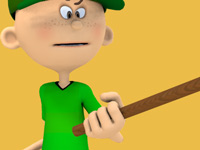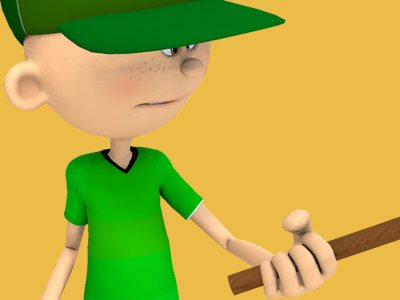Equipment
The basic dress of a player is a protective equestrian helmet (usually of a distinctive colour, to be distinguished at the considerable distance from which onlookers are watching the game), riding boots to just below the knees, white trousers (often ordinary denim jeans), and a coloured shirt bearing the number of the player's position. Optional equipment includes one or two gloves, wristbands, kneepads (mandatory in some clubs), spurs, face mask, and a whip. The only piece of equipment required by the United States Polo Association (USPA) rules is the helmet or cap with a chin strap.
The outdoor polo ball is made of a high-impact plastic, but was formerly made of either bamboo or willow root. The indoor polo ball is leather-covered and inflated, and is about 4 1⁄2 inches (11 cm) in diameter. The outdoor ball is about 3 1⁄4 inches (8.3 cm) in diameter and weighs about four ounces (113.4 g). The polo mallet has a rubber-wrapped grip and a webbed thong, called a sling, for wrapping around the thumb. The shaft is made of manau-cane (not bamboo because it is hollowed) although a small number of mallets today are made from Composite materials. Composite materials are not preferred by top players, because the shaft of composite mallets can't absorb vibrations as well as traditional cane mallets. The heads of the mallet are generally a cigar shape made from a hardwood called tipa, approximately 9 1⁄4" inches long. The mallet head weighs from 160 grams (5.6 ounces) to 240 grams (8.4 ounces), depending on player preference and the type of wood used, and the shaft can vary in weight and flexibility depending on the player's preference. The weight of the mallet head is of important consideration for the more seasoned players. Female players often use lighter mallets than male players. For some polo players, the length of the mallet depends on the size of the horse: the taller the horse, the longer the mallet. However, some players prefer to use a single length of mallet regardless of the height of the horse. Either way, playing horses of differing heights requires some adjustment by the rider. Variable lengths of the mallet typically range from 50 inches (127 centimetres) to 53 inches (134 centimetres). The term mallet is used exclusively in US English; British English prefers the term polo stick. The ball is struck with the broad sides of the mallet head rather than its round and flat tips.
Polo saddles are English-style, close contact, similar to jumping saddles; although most polo saddles lack a flap under the billets. Some players will not use a saddle blanket. The saddle has a flat seat and no knee support; the rider adopting a forward-leaning seat and closed knees dissimilar to a classical dressage seat. A breastplate is added, usually attached to the front billet. A standing martingale must be used: so, a breastplate is a necessity for safety. The tie-down is usually supported by a neck strap. Many saddles also have an overgirth. The stirrup irons are heavier than most, and the stirrup leathers are wider and thicker, for added safety when the player stands in the stirrups. The legs of the pony are wrapped with polo wraps from below the knee to the fetlock to minimize pain. Jumping (open front) or gallop boots are sometimes used along with the polo wraps for added protection. Often, these wraps match the team colours. The pony's mane is most often roached (hogged), and its tail is docked or braided so that it will not snag the rider's mallet.
Polo is ridden with double reins for greater accuracy of signals. The bit is frequently a gag bit or Pelham bit. In both cases, the gag or shank rein will be the bottom rein in the rider's hands, while the snaffle rein will be the top rein. If a gag bit is used, there will be a drop noseband in addition to the cavesson, supporting the tie-down. One of the rein sets may alternately be draw reins.
SPORTS

RESOURCES
This article uses material from the Wikipedia article "Polo", which is released under the Creative Commons Attribution-Share-Alike License 3.0.
© Stories Preschool. All Rights Reserved.









